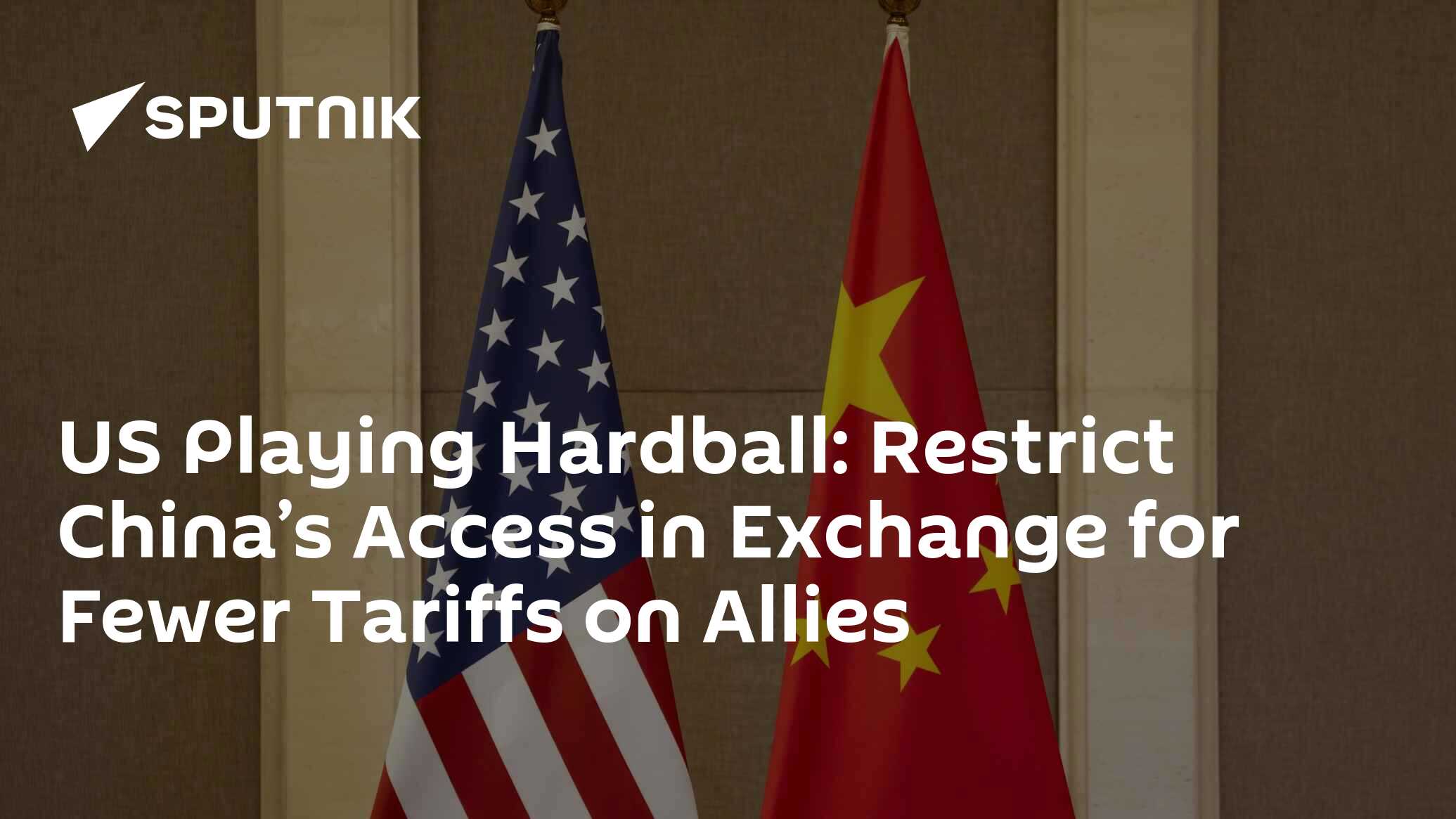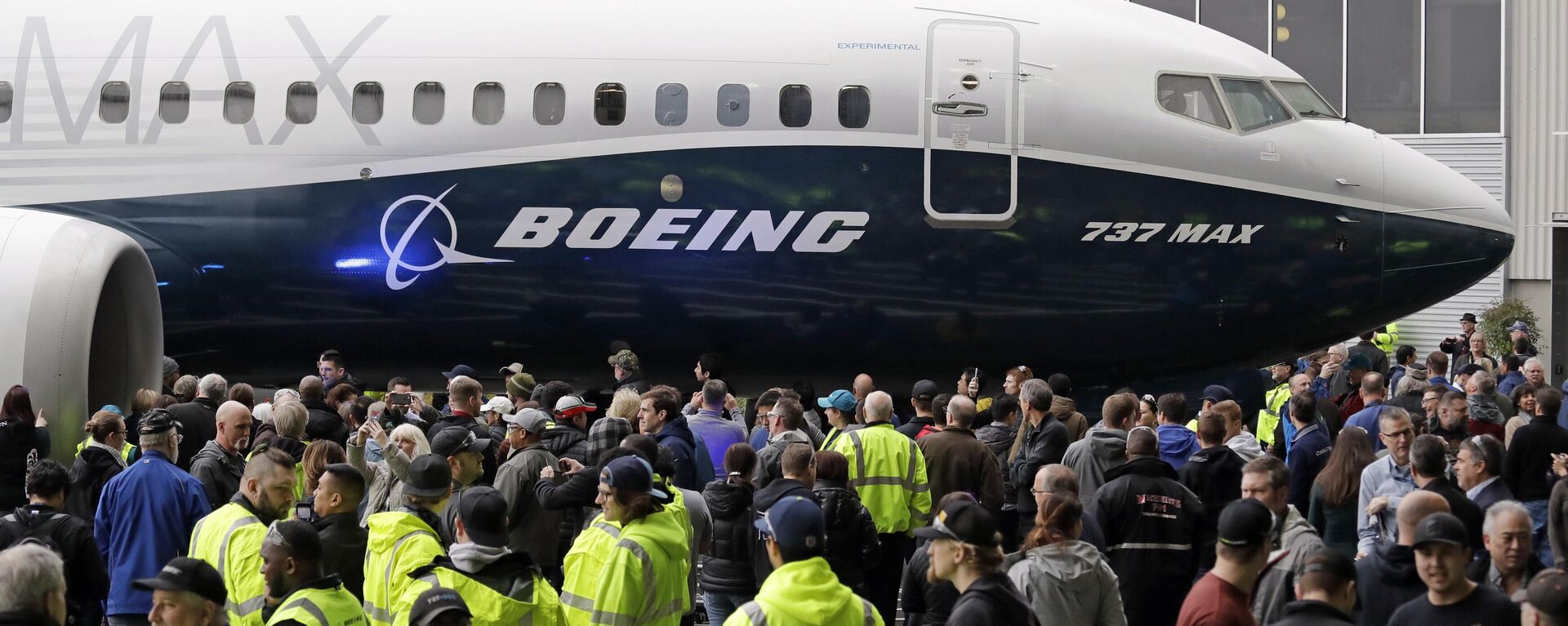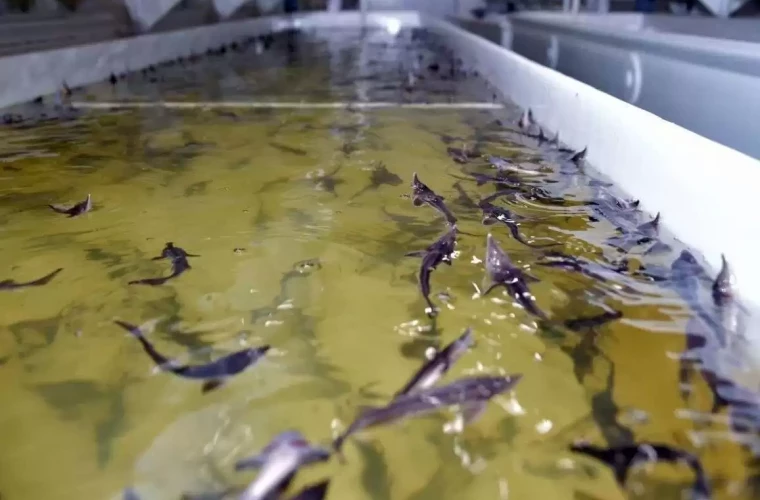https://sputnikglobe.com/20250416/us-to-offer-lower-tariffs-in-exchange-for-chinas-trade-isolation–reports-1121878374.html
US Playing Hardball: Restrict China’s Access in Exchange for Fewer Tariffs on Allies
US Playing Hardball: Restrict China’s Access in Exchange for Fewer Tariffs on Allies
Sputnik International
During negotiations with more than 70 countries, the US administration plans to secure commitments from trade partners to economically isolate China in exchange for lower tariffs imposed by the White House, The Wall Street Journal newspaper reported.
2025-04-16T09:34+0000
2025-04-16T09:34+0000
2025-04-16T09:43+0000
world
china
donald trump
us
washington
us treasury
white house
https://cdn1.img.sputnikglobe.com/img/07e9/02/0b/1121555783_0:160:3072:1888_1920x0_80_0_0_eb418a21755ec3d71ec3452f154e4c19.jpg
The White House plans to convince countries to prohibit China from transporting goods through their territories, the report said on Tuesday, adding that Washington also wants to ban Chinese companies from locating in these countries in order to circumvent US tariffs, and prevent cheap Chinese industrial goods from entering their markets. US Treasury Secretary Scott Bessent has become one of the key developers of this strategy, the report read. In his opinion, in the near future, such agreements can be reached primarily with Japan, the United Kingdom, Australia, South Korea and India. On April 2, US President Donald Trump announced reciprocal tariffs on imports from various countries, establishing a baseline rate of 10%. The tariffs were intended to be adjusted based on the rates charged by those countries on US goods. However, on April 9, Trump declared a 90-day pause on tariffs for all countries except China and lowered the rate to 10% to facilitate negotiations. After a number of steps in the so-called trade war between Washington and Beijing, US tariffs on Chinese goods reached 145%, and China’s duty on American goods amounted to 125%.
https://sputnikglobe.com/20250415/china-suspends-all-future-boeing-deliveries-amid-ongoing-us-trade-standoff–reports-1121876780.html
china
washington
Sputnik International
feedback@sputniknews.com
+74956456601
MIA „Rossiya Segodnya“
2025
Sputnik International
feedback@sputniknews.com
+74956456601
MIA „Rossiya Segodnya“
News
en_EN
Sputnik International
feedback@sputniknews.com
+74956456601
MIA „Rossiya Segodnya“
https://cdn1.img.sputnikglobe.com/img/07e9/02/0b/1121555783_171:0:2902:2048_1920x0_80_0_0_8a087365ed4024021fe3234b22508bef.jpg
Sputnik International
feedback@sputniknews.com
+74956456601
MIA „Rossiya Segodnya“
us to offer lower tariffs, china’s trade isolation, economically isolate china
us to offer lower tariffs, china’s trade isolation, economically isolate china
US Playing Hardball: Restrict China’s Access in Exchange for Fewer Tariffs on Allies
09:34 GMT 16.04.2025 (Updated: 09:43 GMT 16.04.2025)
MOSCOW (Sputnik) – During negotiations with more than 70 countries, the US administration plans to secure commitments from trade partners to economically isolate China in exchange for lower tariffs imposed by the White House, The Wall Street Journal newspaper reported.
The White House plans to convince countries to prohibit China from transporting goods through their territories, the report said on Tuesday, adding that Washington also wants to ban Chinese companies from locating in these countries in order to
circumvent US tariffs, and prevent cheap Chinese industrial goods from entering their markets.
US Treasury Secretary Scott Bessent has become one of the key developers of this strategy, the report read. In his opinion, in the near future, such agreements can be reached primarily with Japan, the United Kingdom, Australia, South Korea and India.
On April 2, US President Donald Trump announced reciprocal tariffs on imports from various countries, establishing a baseline rate of 10%. The tariffs were intended to be adjusted based on the rates charged by those countries on US goods. However, on April 9, Trump declared a 90-day pause on tariffs for all countries except China and lowered the rate to 10% to facilitate negotiations.
After a number of steps in the so-called trade war between Washington and Beijing, US tariffs on Chinese goods reached 145%, and China’s duty on American goods amounted to 125%.








